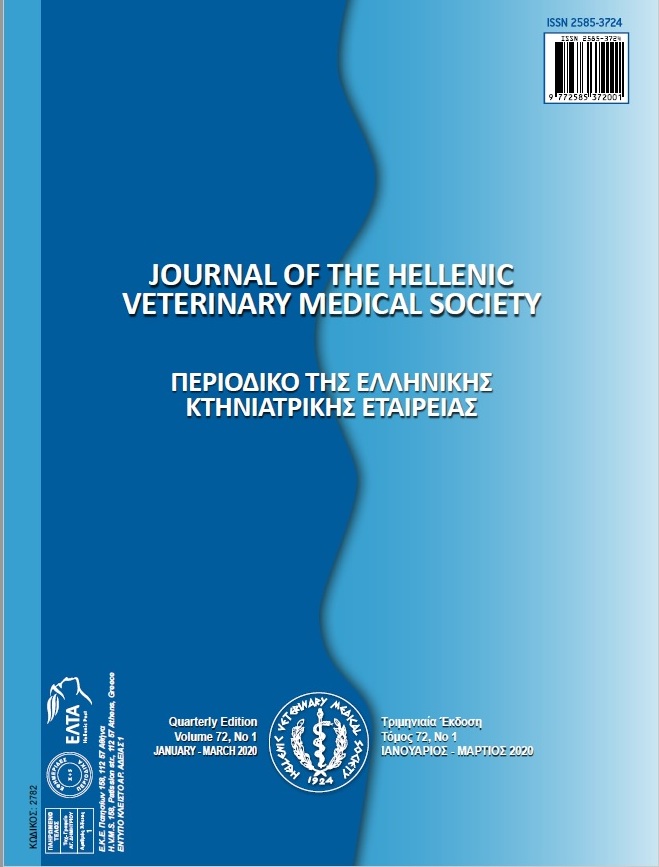Epidemiology, burden and seasonal variation of fasciolosis determined through faecal examination and excretory/secretory antigens based ELISA

Abstract
The study was conducted to evaluate predominance and the related risk factors of sheep fasciolosis in Faisalabad district, Punjab, Pakistan. In addition, comparison of the coprological examinationand excretory/secretory antigens (ES Ag)-based ELISA was also performed to determine the variation in the prevalence of fasciolosis. Ofthe1200 faecal and blood samples,128 (10.67%) and 241 (20.08%) samples were found positive for Fasciola infection and anti-Fasciola antibodies respectively.The prevalence of fasciolosis was significantly (P < 0.05) higher in female and adultanimals. Most of the animals showed moderate (55.47%) infection which was significantly higher than mild (28.91%) and severe (15.63%) infections. The highest prevalence of fasciolosis was determined in December (26.00% through faecal examination; 42.00% through ELISA) with a mean EPG of 842.3 while lowest in May (02.00% through faecal examination; 07.00% through ELISA) with a mean EPG of 650. The frequency distribution of fasciolosis was significantly (P < 0.05) highest in the winter (faecal examination 20.67%; ELISA 34.67%) followed in order by the monsoon (faecal examination 09.00%; ELISA 18.67%), spring (faecal examination 08.33%; ELISA 17.33%) and summer (faecal examination 04.67%; ELISA 09.67%). The highest mean EPG of fasciolosis was determined in the spring (894) followed in order by the winter (851.67), summer (654.67) and monsoon (616.33). Although the faecal examination is the gold standard and the “best method” in the diagnosis of sheep fasciolosis; however, the serological tests should not be excluded especially the home-made ES Ag-based ELISA which might be preferred and more affordable risk assessment tool in the field epidemiology.
Article Details
- How to Cite
-
RIZWAN, H., SAJID, M., ABBAS, H., KHAN, M., AKRAM, Q., & SHAMIM, A. (2022). Epidemiology, burden and seasonal variation of fasciolosis determined through faecal examination and excretory/secretory antigens based ELISA. Journal of the Hellenic Veterinary Medical Society, 72(4), 3449–3454. https://doi.org/10.12681/jhvms.29394
- Issue
- Vol. 72 No. 4 (2021)
- Section
- Research Articles

This work is licensed under a Creative Commons Attribution-NonCommercial 4.0 International License.
Authors who publish with this journal agree to the following terms:
· Authors retain copyright and grant the journal right of first publication with the work simultaneously licensed under a Creative Commons Attribution Non-Commercial License that allows others to share the work with an acknowledgement of the work's authorship and initial publication in this journal.
· Authors are able to enter into separate, additional contractual arrangements for the non-exclusive distribution of the journal's published version of the work (e.g. post it to an institutional repository or publish it in a book), with an acknowledgement of its initial publication in this journal.
· Authors are permitted and encouraged to post their work online (preferably in institutional repositories or on their website) prior to and during the submission process, as it can lead to productive exchanges, as well as earlier and greater citation of published work.




